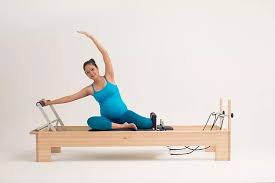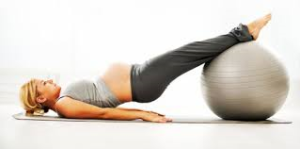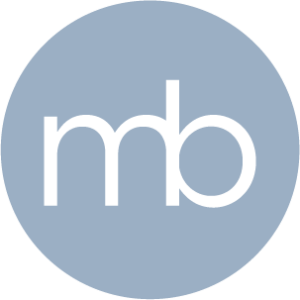Pregnancy is a time of great physical change. Having an educated Pilates instructor to guide you through these times can be not only helpful but essential to avoiding injury and staying healthy.

Prenatal Pilates during the first trimester
As with any exercise program it is always necessary to get clearance from your Dr. to exercise. There are not that many contraindications in the first trimester but this is the perfect time to start setting up good alignment habits and strengthening for what’s to come. Learning how to stabilize the pelvis and low back early will make it easier to do in the second and third trimester when back care really matters! Also strength and awareness of the pelvic floor will help with child birth and facilitate recovery. And it doesn’t hurt to start strengthening the upper body to prepare for holding and nursing the baby .

Prenatal Pilates during the second and third trimester
As the baby grows the center of gravity begins to shift changing your sense of balance and influencing your gait. Pilates can help make the changes as seamless as possible, allowing you to feel natural during this time of dramatic change.
Once the second trimester begins there are certain exercises that start to get phased out due to the growing belly. Some of the abdominal exercises get modified to avoid putting more strain on the rectus abdominus which can cause diastasis , a separating of the abdominal tissues. Lying on your back for long periods can be problematic due to the increased weight on your vena cava and of course if becomes obvious when lying on our stomach is no longer an option. But there are also changes that are not as visible or obvious as your new bump!

During these mid to late stages of pregnancy the body begins to secrete relaxin, a hormone that softens the ligaments throughout the body. This loosening of the joints allows the pelvic basin to open during childbirth. The side effect of relaxin is that all of joints in the body are more susceptible to misalignment, especially those in the lower back and pelvis. This is when the stabilization exercises really come into play.
Prenatal Pilates stabilization exercises
Pilates exercises to strengthen the “inner unit” can directly address this hyper mobility. Pilates uses breathing and gentle exercises to bring strength and awareness into the pelvic floor, multifidi and transverse abdominals. The combination of these three muscles creates stability and control in the low back and pelvis. Creating stability can avert pain and nerve related issues, such as sciatica, that are so common during pregnancy.
Prenatal Pilates program
Ideally one comes to private sessions during their pregnancy so they can be guided through each trimester and their individual needs will be addressed. Although once a week is enough , one can also come 2-3 times a week. Because Pilates is a low-impact workout it is an ideal choice to stay healthy throughout the entire 9 months. If you are interested in prenatal Pilates in NYC you can contact us at info@mongoosebodyworks.com.
Halle Clarke
A boutique Pilates studio in NYC


